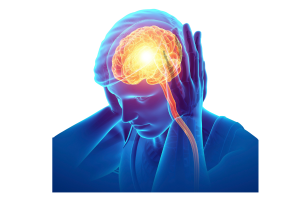Headaches and migraines can significantly affect quality of life, causing everything from mild discomfort to severe, disabling pain. For many, traditional treatments offer limited relief, leaving them searching for alternatives. Physiotherapy has emerged as an effective, drug-free solution, with the Watson Headache® Approach at the forefront for managing headaches and migraines. This approach, alongside other physiotherapy techniques, offers targeted, effective management options. Here’s an overview of how physiotherapy, and specifically the Watson Headache Approach, can help alleviate headaches and migraines.
How Physiotherapy Helps with Headaches and Migraines
Physiotherapy can be a powerful tool in managing headaches and migraines, especially for those triggered or exacerbated by muscular or postural issues. While many headache types exist, cervicogenic headaches (originating from the neck) are often treated successfully with physiotherapy.
Key techniques include:
- Postural correction: Adjusting alignment and posture to relieve strain on muscles and joints.
- Muscle release techniques: Targeting specific areas, such as the neck, shoulders, and back, to relieve tension that can lead to headache.
- Manual therapy: Hands-on techniques to mobilise and relax muscles, increase circulation, and relieve pain.
The Watson Headache Approach: A Targeted Solution
Developed by Australian physiotherapist Dean Watson, the Watson Headache® Approach specifically addresses headaches and migraines stemming from issues in the upper cervical spine (the top vertebrae of the neck). This technique focuses on correcting dysfunction in these joints, as research has shown that irritation in the upper cervical spine can refer pain to the head, triggering headaches and migraines.
How the Watson Headache Approach Works
- Assessment of Cervical Joints: The physiotherapist assesses the joints in the upper cervical spine. The top three cervical vertebrae (C1, C2, and C3) are often implicated in headache pain due to their connection with the trigeminal nerve, a primary player in headache pathways.
- Manual Mobilisation: Using gentle, sustained pressure, the physiotherapist mobilises specific cervical joints. This is a highly targeted technique that requires extensive training to perform effectively and safely.
- Symptom Provocation and Resolution: During treatment, the therapist may provoke familiar headache pain. This response helps confirm that the headache source has been identified. With ongoing treatment, this pain response should diminish, leading to lasting relief.
- Corrective Exercises and Posture Training: Alongside manual therapy, patients may receive corrective exercises and posture guidance to reduce neck strain and prevent recurring pain.
The Physiotherapy Process: What to Expect
Initial Assessment
Your physiotherapist will start with a comprehensive assessment, evaluating factors such as:
- Headache history and triggers
- Physical posture and alignment
- Neck and shoulder muscle tension
- Range of motion in the cervical spine
Treatment Sessions
In each session, the therapist will use the Watson Headache Approach to gently mobilise the cervical joints.
Sessions typically include:
- Manual therapy: Mobilisations to address tight joints and muscle tension in the neck.
- Exercise: Simple exercises to strengthen supporting muscles, improve posture, and enhance mobility in the neck.
- Education and Advice: Understanding lifestyle factors that may be contributing to headache patterns is crucial, as small adjustments can make a significant difference.
Benefits of Physiotherapy and the Watson Headache Approach
- Drug-Free Pain Relief: For those seeking non-pharmacological treatment, physiotherapy offers a natural, safe alternative.
- Targeted Treatment: By addressing the root cause of headache and migraine pain, the Watson Headache Approach provides specific relief, reducing the need for symptomatic treatments.
- Improved Mobility and Posture: Physiotherapy strengthens supporting muscles and improves posture, which can prevent headaches from recurring.
- Long-Term Relief: Unlike temporary pain relief methods, the Watson Headache Approach offers long-term improvement by correcting underlying cervical issues.
Other Physiotherapy Techniques for Headache and Migraine Relief
While the Watson Headache Approach is a central method in headache physiotherapy, other techniques are often used in conjunction to enhance its effects:
- Soft Tissue Release: Techniques like myofascial release and trigger point therapy target tight muscles that may contribute to neck strain and tension-type headaches.
- Dry Needling and Acupuncture: These methods help reduce muscle tension and increase blood flow, offering additional relief.
- Exercise Therapy: Specific exercises can strengthen the neck and upper back muscles, improve posture, and increase resilience against stress that triggers headaches.
- Education on Ergonomics and Posture: Understanding optimal posture and workplace ergonomics can prevent strain-related headaches.
Is Physiotherapy Right for Your Headache or Migraine?
Physiotherapy is particularly helpful for cervicogenic headaches and tension-type headaches, which are commonly linked to neck issues. However, if you’re unsure whether your headaches are related to neck dysfunction, a trained physiotherapist can assess your symptoms and neck function. In some cases, migraine sufferers also benefit from physiotherapy, especially when neck stiffness or tension accompanies migraine attacks.


